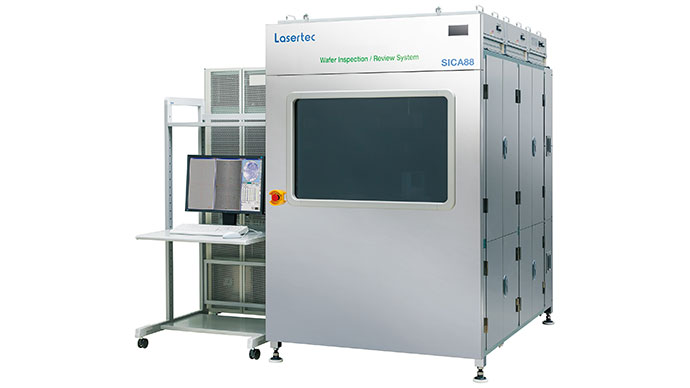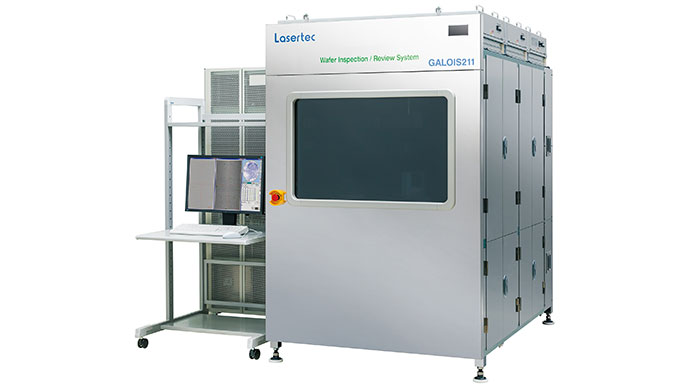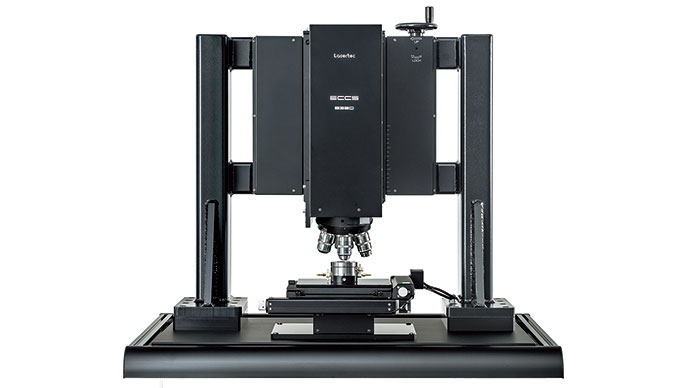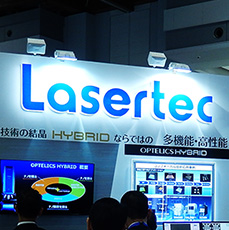Spectroscopic reflectometry film thickness measurement
The spectroscopic reflectometry film thickness measurement of HYBRID+ measures the absolute reflectance of a sample using 6 wavelengths of light available for wavelength selection and calculates film thickness by fitting the data with an optical model. Measurement is possible in scales ranging from a few nanometers to 1 micrometer. HYBRID+ can measure the film thickness of a single layer or multiple layers. A typical tool of spectroscopic reflectometry film thickness measurement calculates average film thickness in a spot area of about 1mm in diameter. HYBRID+ measures average thickness for an area in scales from the sub-micrometer level to the size of the entire field of view, which may be as large as several millimeters. This is because HYBRID+ specifies an area of confocal image to be the subject of film thickness measurement. Furthermore, HYBRID+ can measure film thickness at each pixel and calculate a film thickness distribution for the sample.
As seen in the example of small area measurement below, HYBRID+ can measure film thickness by focusing on a SiO2 pattern on a silicon substrate. It also allows users to conduct film thickness analysis for multiple areas in the field of view after image capture. The example of film thickness distribution measurement below shows the continuous measurement of spatial changes in molecular film steps of Langmuir-Blodgett film.
Film thickness measurement for a small area
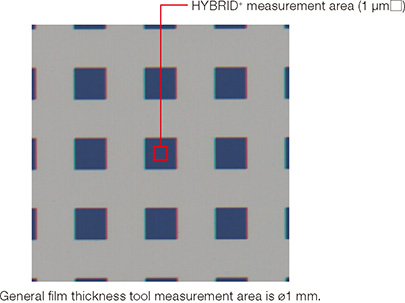
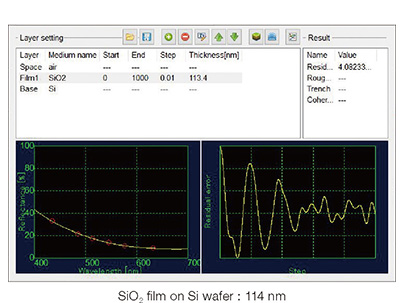
Film thickness distribution measurement

Film thickness measurement of a pattern
HYBRID+ can measure real patterns. It does not require a test pattern, such as TEG, unlike other typical tools.
Residue measurement after etching
HYBRID+ can measure resist residues at the bottom of narrow trenches.
Film thickness distribution measurement
HYBRID+ can measure the thickness of a film formed on a substrate without being affected by the undulation of the lower layer.
Film thickness measurement on a transparent substrate
HYBRID+ can measure reflectance accurately even for a transparent substrate because confocal optics make it possible to conduct measurement free from the interference of reflected light from the back surface.
You might also be interested in

